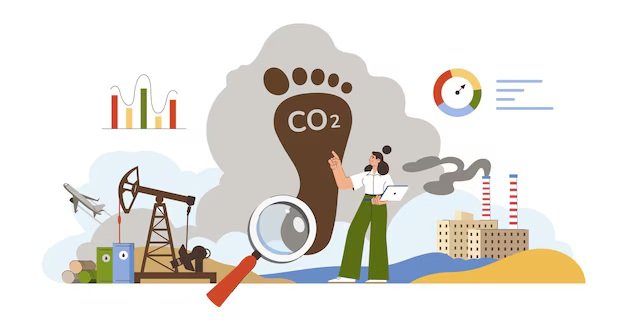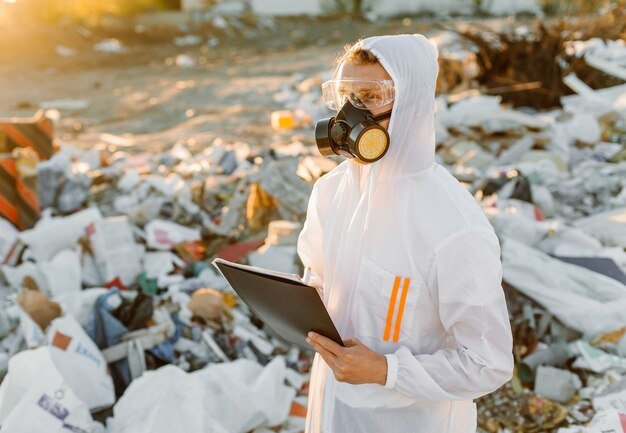Is Shopping Sustainable? The Real Environmental Cost of Consumerism
Shopping is not just a private habit — it shapes the planet. Every product we buy carries a hidden trail: raw materials mined from ecosystems, factories that use energy and water, transport that burns fossil fuels, packaging that becomes waste, and often a landfill where the item finally ends up. For decades, cheap goods and rapid turnover — especially in fashion, electronics and single-use packaging — have driven growth while increasing pollution and greenhouse gases. At the same time, shoppers, activists and some companies are pushing back with reuse, repair and new business models that try to reduce the damage.
Understanding whether shopping can ever be “sustainable” means looking at how goods are made, who profits, and whether real alternatives actually replace new consumption or just add to it. According to the United Nations Environment Programme, the world remains far from a circular economy, and material use and waste continue to be major drivers of environmental harm.

In This Article
- Why Shopping Matters to the Planet
- People and Companies Changing the Rules
- Practical Steps Shoppers Can Take Today
Why Shopping Matters to the Planet
The scale of modern consumption is enormous. In clothing alone, global pre-owned apparel sales jumped substantially in recent years as more people buy and sell used items, yet the system that produces most new clothes still relies on cheap materials, fast production and short lifespans for garments. A major industry analysis has long warned that fashion’s linear model — make, use, discard — is unsustainable and that redesigning the system for reuse and recycling is essential to cut pollution and resource use. A report by the Ellen MacArthur Foundation in 2017 laid out how a circular textiles economy could avoid huge volumes of waste and emissions by designing clothes to last longer, be repairable, and be easier to recycle.
Shoppers are also voting with their wallets in some markets. Research that tracks real sales — not just survey answers — found that products carrying environmental or social claims grew faster than those without such claims over a five-year period. According to a McKinsey and NielsenIQ analysis, products making ESG-related claims averaged higher cumulative growth (28 per cent) than products without such claims (20 per cent) over the period studied, suggesting that consumers in many categories are translating concern for the environment into purchases. That does not mean every green label is trustworthy — companies can overstate benefits — but the data show demand is shifting.
At the same time, the rise of resale and secondhand markets is a real trend with measurable size. Industry reports and market analysis show rapid growth: global sales of pre-owned clothing increased notably, and platforms for resale have expanded online and into high street retail. ThredUp’s recent resale reports and wide reporting in the press found pre-owned apparel sales running into the hundreds of billions of dollars and secondhand’s share of fashion sales increasing, driven by younger shoppers and by economic pressure that makes value matter more. These shifts matter because reuse and resale can delay or avoid new production — the clearest immediate way for shopping to reduce environmental harm.
People and Companies Changing the Rules
Not everything about shopping is bleak. People and companies provide examples where consumption changes lead to measurable benefits — or at least clearer alternatives.
One very concrete example started with a single community event. Martine Postma, a Dutch journalist frustrated by throwaway culture, organised the first Repair Café in Amsterdam in October 2009. What began as a local afternoon of neighbours fixing kettles and toasters turned into a global movement: Repair Cafés now exist in many countries, teaching people to repair and keep goods in use longer. That practical approach — training, tools, and a social setting for repair — reduces waste and reconnects people to the value of what they own. The Repair Café Foundation documents how repair systems scale at a local level and reduce the number of items sent to landfill.
Companies have also shown different choices. Patagonia’s founder, Yvon Chouinard, dramatically altered his company’s ownership in 2022 so that profits would fund environmental action rather than private gain. Patagonia is widely cited as an example of a business intentionally aligning its purpose with conservation, encouraging product longevity, repair and activism, and making a public argument that business can do more than chase quarterly growth. Patagonia’s move made headlines and gave a real-world example of how an apparel brand can prioritise the planet in its ownership and mission.
The resale sector offers both promise and complexity. Platforms such as ThredUp, Depop and Vinted have grown quickly and brought secondhand shopping into mainstream culture. Their leaders — and the platforms’ own data — point to young people buying pre-loved clothes for both value and style. According to The Guardian, James Reinhart, co-founder of ThredUp, noted that resale can be more resilient during economic squeezes because shoppers seek value and durability. But there are real tensions: many resale platforms still struggle with profitability, and there is an open question about “displacement” — do secondhand purchases replace new ones, or do they add extra purchases overall? Mainstreaming secondhand is powerful only if it substitutes for new production rather than simply expanding the total number of items people own.
Experts also warn that shopping’s sustainability depends on supply-side change. Industry studies and environmental agencies stress that packaging, fast production cycles and planned obsolescence must be tackled alongside consumer choices. The UN Environment Programme and others have urged nations and companies to adopt circular policies — less virgin material, better recycling systems, clearer product information and design for durability — because consumer choices alone cannot fully offset the environmental cost of a production system built on cheap, single-use goods.
Practical Steps Shoppers Can Take Today
If you want your shopping to do less harm and more good, there are clear actions that make a real difference — and a few traps to avoid.
Buy less and buy better. Choosing fewer items that are designed to last reduces waste and often saves money over time. Look for durable materials, good construction and clear repair policies. Brands that publish transparency reports, product repair manuals or offer spare parts are usually an easier bet for long-term value. According to the Ellen MacArthur Foundation’s work on textiles, designing for durability and easy repair is a central path to a lower-impact fashion system.
Repair and reuse. Using community repair events or services is one of the highest-impact behaviours for many household goods. The Repair Café network shows how simple skills and local social spaces can keep items in service longer and prevent needless disposal. If an item can be repaired, repair it — often the environmental cost of a repair is far lower than replacing the product.
Choose secondhand where possible, but check the “displacement” effect. Buying pre-owned can be highly sustainable when it replaces the purchase of a new item. Buy from reputable resale services or local thrift stores, and think about what you truly need before buying more. Market data show that secondhand shopping has grown because people want value and style at lower cost, and this trend can reduce demand for new goods if it becomes a true substitute.
Watch out for greenwashing. Labels and marketing sometimes overstate an item’s environmental benefits. The McKinsey/NielsenIQ analysis that tracked real sales warns companies and consumers alike: growth of “ESG-labelled” products is real, but claims must be backed by genuine action — otherwise trust erodes. Ask questions: does the company disclose emissions, material sources and repair options? Is a claimed improvement meaningful or marginal?
Support system change. Individual choices matter, but policy and industry shifts make the largest difference. Support right-to-repair laws, deposit-return schemes for packaging, extended producer responsibility rules that require makers to take back products, and public investment in recycling and collection infrastructure. Large-scale change reduces the environmental cost of goods across the board and makes sustainable choices easier and cheaper for everyone. The UN and other international bodies recommend circular strategies because systemic shifts in production and waste yield the biggest environmental returns.
Finally, act with purpose, not perfection. No single shopper can solve industrial-scale problems overnight. But real-world examples — Repair Cafés where neighbours fix appliances, Patagonia’s ownership change that redirects profits to environmental causes, and the rapid growth of resale markets — show that incremental, practical actions can scale. Buy less, choose durable items, repair what you own and favour resale when it replaces new production. Push for policies that hold producers accountable. Those combined steps will make our shopping healthier for people and the planet.







